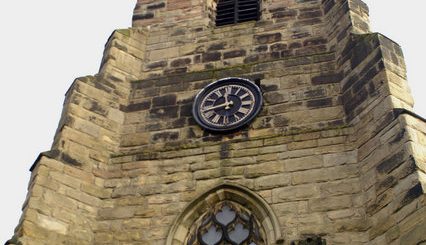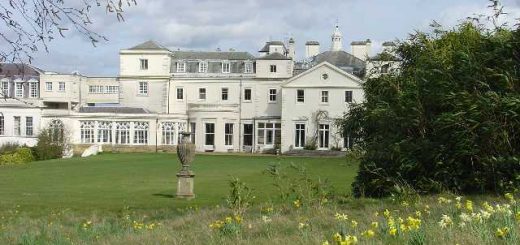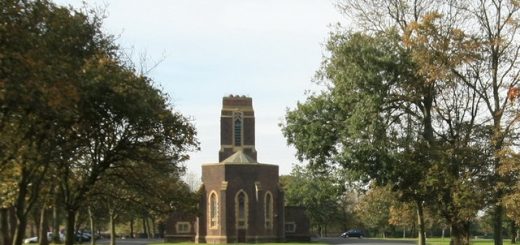St Osyth’s Fountain
Some wells in Britain are associated with the beheading of their patron saint, examples of which include the case of St Winifred, St Fremund, St Juthware and St Osyth. Charles Hope in ‘The Legendary Lore of the Holy Wells of England (1893) gave the following two accounts of St Osyth’s life, her martyrdom and the creation of the healing fountain.
ST. OSITHA was the daughter of Redoald or Frewald, the first Christian King of the East Angles, by Wilburga, daughter of Penda, King of the Mercians. She was born at Marendon, in the county of Bucks, and, according to the legend, took a vow of perpetual virginity at an early age. She was compelled, however, to marry Sighere, the Christian King of the East Saxons. The marriage was not consummated, for in her husband’s absence she assumed the veil, and afterwards obtained his consent to the fulfilment of her vow. Sighere gave her the village of Cise or Chich, in the Tendring Hundred of Essex, ten miles south-east from Colchester, and sixty-one from London; now called St. Osyth, or, according to the natives, Toosy. Here she founded a church of St. Peter and St. Paul, and instituted a nunnery, supposed to be the most ancient monastic establishment in England. She was beheaded by the Danes, and the legend runs that at the place of her martyrdom a fountain sprang up, which continues to this day as a sovereign remedy for many diseases; her head was cut off ; the body rose, and taking the head in her hand walked–guided by angels–to the church. Here it knocked at the door, and then fell to the ground. The stream was afterwards collected by the monks in a long pipe. “But a few years ago,” says Mr. Watson (Tendring Hundred in the Olden Time), “a modern goth, wanting ballast for his yacht, tore up and utilised the leaden pipes, and thus destroyed the pride of ages.”–Communicated.
St. Osyth was commemorated October 7.
Another account is as follows:
If what honest Capgrave* tells of St. Osyth be correct, it is scarcely wonderful that her restless spirit should “walk” at certain approved times of the year. She seems to have met with nought but ill-luck from her infancy. When a child she was sent with a book by St. Edith to St. Modwen, at Pollesworth, in Warwickshire, but on her way fell into a river and was drowned, but restored to life after three days at the intercession of the latter. Against her will she was betrothed to Sibere, prince of the East Saxons, but giving him the slip, she took the veil, and then prevailed upon her disappointed lover to give her the land whereon to build a, nunnery. Here she reigned as Abbess, till in A.D. 653 some roving Danes landed on the coast of Essex, destroyed the convent, and cut off St. Osyth’s head. Had her old friend St. Modwen been at hand, or that St. Benno who successfully repaired St. Winifred after a similar calamity, she might yet have defied her fate; but they were not, and, left to her own resources, she picked up her head, and, carrying it in her hands, made off to the nearest church. She reached the sacred portal, struck the door with her blood-stained sconce, and, fairly overcome, fell prostrate, and so expired. Where she received the fatal blow a fountain gushed forth, famed in after days as St. Osyth’s well, and blessed by many a sufferer who found there a medicine for his ills. Her body, removed to Aylesbury and there buried, was miraculously brought back to the church to which she made her last and certainly most remarkable journey, and till very lately there was a legend that the murdered abbess, head in hand, visited again well, and wood, and church, scaring the traveller who was so unfortunate as to be belated in Nun’s Wood. Scoffers have said that the sign of the “Good Woman” at Widford owes its origin to the legend of the headless Saint, but this is too deep a subject to be discussed here.–East Anglian Handbook, 1885, p. 69.
*This comment probably refers to John Capgrave (born 21 April 1393 – died 12 August 1464) who wrote accounts of the lives of several obscure saints.
A further account appears in ‘White’s Directory of Essex’ (1848)
‘The parish, anciently called Cice, or Chich, derives its present name from St. Osyth, daughter of Redoald, King of East Anglia, and virgin-wife to Sighere, a Christian King of the East Saxons. She was born at Quarendon, in Buckinghamshire, and, according to the monkish legends, made a vow of virginity at an early age, but was compelled by her father to marry. The marriage, however, was never consummated; for, in the absence of her husband, she assumed the veil; and having afterwards obtained his consent to the fulfilment of her vow, she retired to Chich, and founded a Church and Nunnery. This establishment was plundered and destroyed by the Danes, under Inguar and Hubba; and the royal foundress herself beheaded near an ancient fountain. Her remains were first interred before the door of her church, but afterwards removed to Aylesbury, where many miracles are fabled to have been wrought through her intercession. After the Danes had obtained regal domination in England, Chich St. Osyth was given by King Canute to Earl Godwin, the celebrated Earl of Kent, who granted it to Christ Church, Canterbury; yet at the time of the Domesday Survey, it belonged to the See of London.’
The current Grade I listed parish church and dates from around 1118, being consecrated by Richard de Belmeis, Bishop of London. At the time of its construction there was also an earlier Saxon church, which may or may not have been the one associated with the legend of St Osyth’s beheading. At the same time as the Church was being built, Bishop Belmeis established a Priory for Austin Canons, supposedly on the site of St Osyth’s nunnery.
Map: I am unsure of the exact location where the healing fountain stood so the map shows the site of the Priory, which may have been built where St Osyth’s nunnery stood.























Recent Comments